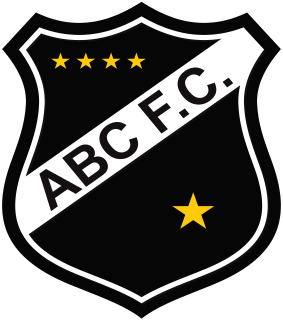
Rio Grande do Norte is one of the states of Brazil, located in the northeastern region of the country, occupying the northeasternmost tip of the South American continent. Because of its geographic position, Rio Grande do Norte has a strategic importance. The capital and largest city is Natal. It is the land of the folklorist Luís da Câmara Cascudo. Its 410 km (254 mi) of sand, much sun, coconut palms and lagoons are responsible for the fame of beaches. Rocas Atoll, the only such feature in the Atlantic Ocean, is part of the state. The main economic activity is tourism, followed by the extraction of petroleum, agriculture, fruit growing and extraction of minerals, including considerable production of seasalt, among other economic activities.

The Brazilian Navy is the naval service branch of the Brazilian Armed Forces, responsible for conducting naval operations. The Brazilian Navy is the largest navy in South America and in Latin America, and the second largest navy in the Americas, after the United States Navy.

ABC Futebol Clube, or ABC, as they are usually called, is a Brazilian football team from Natal in Rio Grande do Norte. Founded on June 29, 1915.
Riachuelo is a word in the Spanish language, meaning a small river with little current or a brook or an arroyo.
Paraná, Paranã or Parana may refer to:
Three ships of the Brazilian Navy have been named Rio Grande do Sul:

Bahia was the lead ship of a two-vessel class of cruisers built for Brazil by the British company Armstrong Whitworth. Crewmen mutinied in November 1910 aboard Bahia, Deodoro, Minas Geraes, and São Paulo, beginning the four-day Revolta da Chibata. Brazil's capital city of Rio de Janeiro was held hostage by the possibility of a naval bombardment, leading the government to give in to the rebel demands which included the abolition of flogging in the navy. During the First World War, Bahia and her sister ship Rio Grande do Sul were assigned to the Divisão Naval em Operações de Guerra, the Brazilian Navy's main contribution in that conflict. The squadron was based in Sierra Leone and Dakar and escorted convoys through an area believed to be heavily patrolled by U-boats.

The Pará-class destroyers were a class of 10 destroyers built for the Brazilian Navy between 1908 and 1910 by Yarrow in the Scotstoun district of Glasgow, Scotland. All were named after states of Brazil. The class closely resembled the British River-class destroyers. All ten ships were ordered under the 1907 Naval Programme and exceeded the design speed during sea trials, the best being Parana. The class proved very maneuverable with a turning circle of 375 yards at full speed. The class served in both World War I and World War II.

The Bahia class was a pair of scout cruisers built for Brazil by Armstrong Whitworth in the United Kingdom, based on a design that borrowed heavily from the British Adventure-class scout cruisers. The class comprised the lead ship Bahia and her sister Rio Grande do Sul, along with a canceled third ship, Ceara. Both were named after states of Brazil. As a class, they were the fastest cruisers in the world when commissioned, and the first in the Brazilian Navy to use steam turbines for propulsion.
Ceará is a state in northeast Brazil.

A naval arms race among Argentina, Brazil and Chile—the most powerful and wealthy countries in South America—began in the early twentieth century when the Brazilian government ordered three dreadnoughts, formidable battleships whose capabilities far outstripped older vessels in the world's navies.

Rio Grande do Sul was a Bahia-class cruiser built for the Brazilian Navy in 1909–10.

Events of the year 1909 in the Brazil.

Events in the year 1953 in Brazil.

Rio Grande do Norte was a Pará-class destroyer of the Brazilian Navy, serving from 1909 to 1944. She was named after the Brazilian state of Rio Grande do Norte.
At least three ships of the Brazilian Navy have borne the name Alagoas
At least three ships of the Brazilian Navy have borne the name Santa Catharina or Santa Catarina
At least two ships of the Brazilian Navy have borne the name Sergipe
This page is based on this
Wikipedia article Text is available under the
CC BY-SA 4.0 license; additional terms may apply.
Images, videos and audio are available under their respective licenses.









